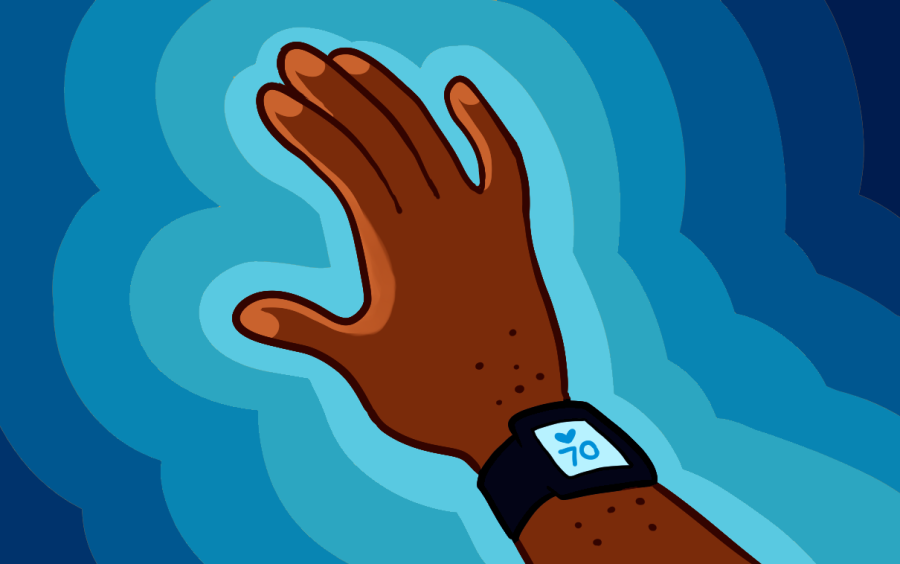UT researchers develop soft sensor to maintain sensitivity under pressure
February 10, 2022
UT researchers developed a new soft pressure sensor for wearable technology that medical professionals could use in health monitoring devices and robotics to improve functionality.
The Lu Research Group created the new sensor for smart watches and other wearable health devices that monitor pulses and vital signs. The sensor maintains sensitivity to vital signs against stimulation like skin moving, unlike other sensors used in similar technology.
The group who developed the sensor is composed of UT engineers who specialize in merging mechanics and electronics to improve human-machine interaction, according to their website. Principal investigator Nanshu Lu said the team placed a virtual reality set around a person’s eyes, which applies a large amount of pressure, and the sensor was still able to measure the person’s arterial pulse waves.
“Other pressure sensors are also very sensitive, but that’s only for a very low pressure range, like a gentle touch,” said Kyoung-Ho Ha, a mechanical engineering graduate student and member of the Lu Research Group. “But since we are using the hybrid response, our sensor has very high sensitivity even at (a) large pressure range, so there are many applications for this.”
Ha and the research team created the sensor by developing a new mechanism in which they made a minimally electrically conductive foam that is both piezo, or pressure, resistive and piezo-capacitive, meaning it has the ability to provide sensing for pressure. Lu said typically, pressure sensors only can do one or the other, but the team created a foam that could do both.
“This is a breakthrough in my opinion,” said Lu, who is also an associate professor in the department of aerospace engineering and engineering mechanics. “Currently, what we have published is just a flexible (sensor), but ultimately we want to make it even as stretchy as a rubberband.”
Lu said having a flexible sensor allows for the sensor to better mold to the skin and get a more accurate read of human pulses. Lu said the sensors could be used in robot hands to make them more humanlike.
The next step for the research group is to enhance the stretching abilities of the sensor to follow the flow of human skin, Ha said.
“I was lucky because I found a new mechanism for the pressure sensor which was effective,” Ha said. “I’m pretty sure this research will be increasing more and more, and it’ll be huge in the future. Everyone wants to use robots and wearable devices for their daily life, and health monitoring and the pressure sensor is the core of it.”



